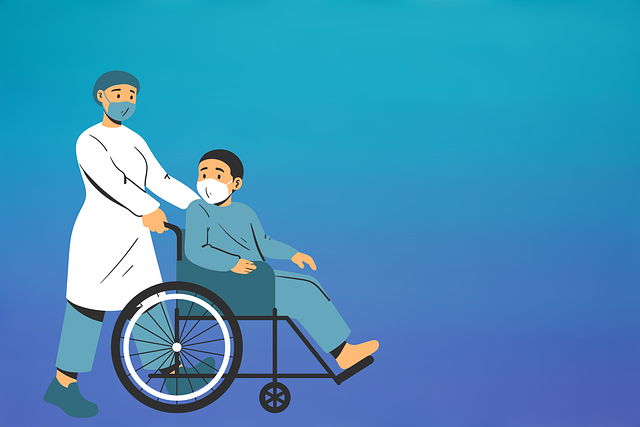Post-traumatic stress disorder (PTSD) is a debilitating mental health condition caused by traumatic events. Cognitive Processing Therapy (CPT), an effective PTSD treatment, focuses on challenging unhelpful thought patterns related to trauma, reducing symptoms like flashbacks and nightmares. The structured approach involves initial assessment, education on thoughts-feelings-behaviors connection, identifying cognitive distortions, exposure therapy, and skill development for symptom management. CPT successfully alleviates PTSD symptoms, enhances quality of life, and promotes resilience through real-life applications. Accessing CPT begins with an initial assessment by a qualified mental health professional specializing in PTSD treatment.
Cognitive Processing Therapy (CPT) offers a transformative approach to treating Post-Traumatic Stress Disorder (PTSD), focusing on the mind’s response to traumatic events. This article delves into the understanding of PTSD, its impact on mental health, and introduces CPT as an effective solution. We explore how CPT addresses specific symptoms, outlines the step-by-step treatment process, shares success stories, and provides guidance on accessing this powerful form of therapy. Discover a potential path to healing with this evidence-based PTSD treatment.
Understanding PTSD and Its Impact on the Mind

Post-traumatic stress disorder (PTSD) is a mental health condition that can occur after experiencing or witnessing a traumatic event, such as military combat, natural disasters, serious accidents, or acts of violence. It’s more than just feeling scared or anxious; PTSD changes how a person’s brain processes thoughts and memories, leading to intense and distressing symptoms. These may include flashbacks, nightmares, severe anxiety, uncontrollable thoughts about the event, and avoidance behaviors related to triggers that remind them of the trauma.
The impact of PTSD on an individual’s mind is profound. It disrupts normal cognitive functioning, causing difficulties with concentration, memory, and decision-making. People with PTSD often feel detached from their emotions and may experience a heightened state of arousal, making it challenging to relax or feel safe. This condition can significantly impair daily life, relationships, work performance, and overall well-being, emphasizing the need for effective PTSD treatment.
Introduction to Cognitive Processing Therapy (CPT)

Cognitive Processing Therapy (CPT) is a structured and evidence-based approach designed specifically to treat Post-Traumatic Stress Disorder (PTSD). This therapy focuses on how individuals interpret and process traumatic events, aiming to help them challenge and modify unhelpful thought patterns and beliefs associated with the trauma. By doing so, CPT facilitates a more adaptive response to traumatic memories, reducing the symptoms of PTSD.
The core principle of CPT involves guiding individuals through a structured series of steps to confront and process traumatic memories in a safe and controlled manner. This process encourages them to re-evaluate their interpretations of the event, leading to a reduction in the emotional impact and associated avoidance behaviors. As a result, CPT offers a powerful tool for PTSD treatment, helping individuals regain control over their lives and emotions after experiencing trauma.
How CPT Addresses PTSD Symptoms

Cognitive Processing Therapy (CPT) is a highly effective approach specifically designed to address symptoms associated with Post-Traumatic Stress Disorder (PTSD). This therapy focuses on modifying unhelpful thought patterns and behaviors that develop after traumatic events, aiming to reduce the distressing symptoms of PTSD. By helping individuals process their traumatic memories and cognitions, CPT enables them to gain control over their emotional responses.
Through structured sessions, CPT encourages patients to confront their traumatic experiences while learning to reframe negative thoughts. This process involves identifying distorted thinking, challenging unhelpful beliefs, and replacing them with more realistic and adaptive ones. As a result, individuals with PTSD can start to experience a reduction in symptoms such as flashbacks, nightmares, avoidance behaviors, and heightened anxiety, leading to improved overall functioning and quality of life.
The Step-by-Step Process of CPT

Cognitive Processing Therapy (CPT) is a structured, step-by-step approach designed to help individuals manage and overcome symptoms of Post-Traumatic Stress Disorder (PTSD). The process begins with an initial assessment where therapists evaluate the client’s history and current symptoms. This helps tailor the treatment plan to their specific needs.
Next, clients learn about the relationship between thoughts, feelings, and behaviors, especially as they relate to traumatic memories. Therapists guide them in identifying unhelpful cognitive patterns and replacing them with more realistic, adaptive thinking. Through exposure therapy, clients gradually confront and process distressing memories, reducing their emotional impact over time. As the process unfolds, individuals gain skills to manage symptoms, improve coping strategies, and enhance overall well-being, effectively navigating their journey towards PTSD treatment and recovery.
Benefits and Success Stories: Real-Life Applications

Cognitive Processing Therapy (CPT) has emerged as a highly effective PTSD treatment, offering numerous benefits to those struggling with post-traumatic stress disorder. By helping individuals challenge and reframe negative thoughts and beliefs associated with traumatic events, CPT enables people to process their experiences in healthier ways. This PTSD treatment encourages a more balanced perspective, reducing the intense emotional reactions that often accompany PTSD.
Real-life applications of CPT demonstrate its success. Many patients report significant improvements in symptoms, including reduced flashbacks, nightmares, and anxiety. Success stories abound, with individuals finding relief from the lifelong burden of PTSD. These positive outcomes not only enhance quality of life but also foster resilience, allowing people to reclaim their lives after traumatic experiences.
Accessing and Preparing for CPT Treatment

Accessing Cognitive Processing Therapy (CPT) for PTSD involves an initial assessment with a qualified mental health professional who specializes in this area. During this session, the therapist will gather information about your symptoms, trauma history, and overall well-being to determine if CPT is an appropriate treatment option for you. It’s important to be open and honest during this process as it helps tailor the therapy to your specific needs.
Preparing for CPT treatment includes setting clear goals with your therapist, understanding the nature of PTSD and its impact on your life, and developing coping strategies to manage symptoms that may arise during exposure exercises. You’ll also learn how to challenge negative thoughts and beliefs associated with the traumatic event(s). This proactive approach ensures a more effective therapy experience as you actively participate in processing and healing from past traumas.
